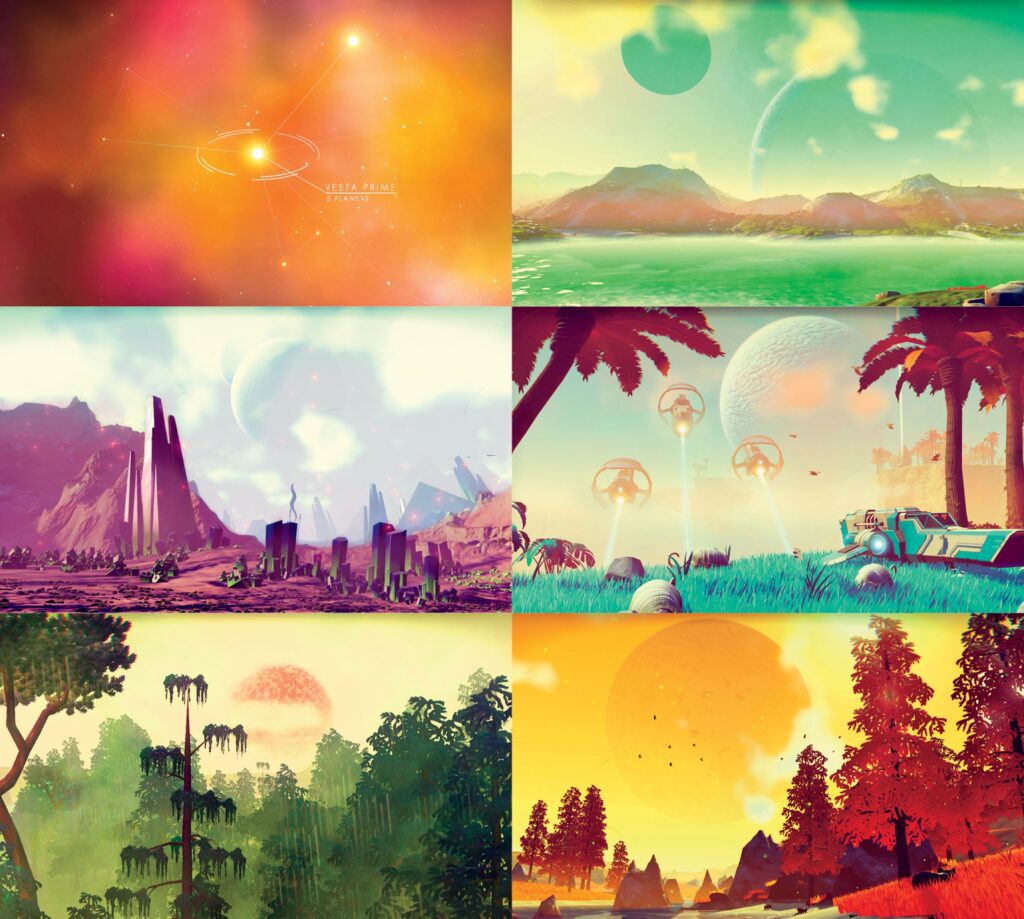Video games are increasingly recognized as a legitimate art form that inspires and influences contemporary artists. The evolution of video games’ graphics, storytelling, and immersive environments have shaped visual genres such as fantasy, sci-fi, and horror. Games like Minecraft, Monument Valley, The Legend of Zelda, and Dark Souls have been recognised for their innovative art direction and design. Video game art has gained popularity in the contemporary art world, with artists using video games as inspiration, subject matter, or medium for their work. As technology evolves, video games’ creative possibilities will continue to influence and impact the art world for years to come.
From Pixels to Paint: The Growing Influence of Video Games on the Art World
When we think about video games, we usually associate them with technology, entertainment, and fun. However, video games are becoming increasingly recognized as an art form that can inspire and influence contemporary artists. From pixelated graphics to immersive worlds, video games offer a unique visual and interactive experience that can create new perspectives and inspire innovative creativity in the art world.
The Artistic Evolution of Video Games
Video games have come a long way since their inception in the 1970s. Early games such as Pong and Space Invaders were simple, blocky, and limited by technology. As technology evolved, so did video games, and from the 80s onwards, video games began to incorporate more complex graphics, storytelling and characters that were visually and emotionally engaging.
As game developers pursued more sophisticated graphics and art styles, video games began to explore different visual genres, such as fantasy, sci-fi, and horror. Games like The Legend of Zelda and Super Mario Bros. became iconic for their colorful and imaginative settings, while games like Doom and Resident Evil became known for their dark and moody environments.
As video games continued to evolve, so did the art involved in producing them. Game designers began to collaborate with visual artists to create concept art, character designs, and landscapes that were both visually stunning and functional within the game’s mechanics. High-quality graphics and animation became central to immersing players in the game’s story and world, and as a result, video games became increasingly immersive and visually striking.
The Emergence of Video Games as an Art Form
Despite the immense creativity and innovation that goes into the development of video games, it wasn’t until recently that video games began to gain recognition as an art form. Games such as Minecraft and Monument Valley are prime examples of games that have been praised for their innovative art direction and design. Even more established franchises such as The Legend of Zelda and Dark Souls have been recognized for their contributions to gaming art.
The emergence of video games as an art form sparked interest from artists outside the gaming world. Artists began to explore the visual and narrative possibilities of video games in their artwork. This led to the creation of a new form of contemporary art, known as video game art.
Video Game Art in the Contemporary Art World
Video game art has become increasingly popular in the contemporary art world, with more artists using video games as inspiration, subject matter, or even as the medium for their work. The use of video games in art has been praised for its ability to create a bridge between traditional art and contemporary culture.
The influence of video games on contemporary art can be seen in several ways. Some artists use video games as a source of inspiration, incorporating themes and visual styles from video games into their work. Artists like Cory Arcangel and Nicolas Sassoon create digital collages that incorporate elements from classic video games, blurring the line between the digital and physical worlds.
Other artists have taken a more literal approach, creating art that is fully immersive and interactive in the same way video games are. Artists like Rafael Lozano-Hemmer create installations that use technology to create interactive experiences for viewers. His piece, “Pulse Spiral,” is a large-scale installation that features over 300 robotic lamps that react to the heartbeat of the viewer.
The Future of Video Games and Art
The influence of video games on contemporary art is undeniable, and it will be interesting to see how video games continue to shape the art world in the future. As technology continues to evolve, so will the creative possibilities of video games. The line between game design and art will become increasingly blurred, creating new possibilities for interactive art and immersive experiences.
Video games may even become recognized as a legitimate artistic medium, with exhibitions dedicated to showcasing video game art. The growth of video game culture and the increasing number of gamers worldwide suggests that video games will continue to have a significant impact on the art world for years to come.
Conclusion
Video games have come a long way since the early days of Pong and Space Invaders. Today, video games are recognized as an innovative and creative art form that inspires and influences contemporary artists. From the earliest pixelated graphics to the most immersive virtual worlds, video games have left an indelible mark on the art world. As technology continues to evolve, we can expect to see even more exciting developments in the intersection between video games and art.
